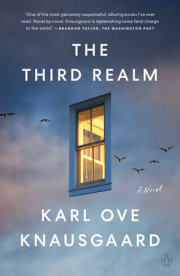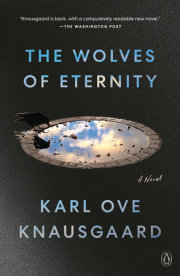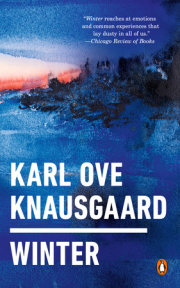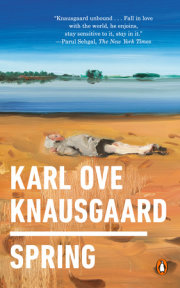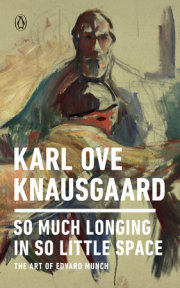Lawn Sprinklers
That I have my own lawn sprinkler has never quite dawned on me, it was just one of the many things I acquired when we bought this house, like the lawnmower, the garden shears, the rakes and all the other equipment that belongs in a garden. Though I have fastened the hose to the tap in the porch of the summer house countless times, have heard the water first hiss, then rush through the hose, and then seen the thin jets of water rise in the garden, maybe five metres into the air, often glittering in the sunlight, and, slowly wavering, fall to one side, before rising again and falling to the other side, in a movement that has always made me think of a waving hand, I have never connected it with myself or my life, as if what it represents doesn't represent me, or in other words that the life I lead here isn't really mine, but merely something I happen to be doing right now. To draw such a far-reaching conclusion from something as insignificant as a metal arm full of holes through which water flows may seem overblown, but of all the things I remember from the summers when I was growing up, the lawn sprinkler is the most emblematic, it is the single object around which the greatest number of moods and events cluster in my memory and which evokes the most associations. Every household in the development had a lawn sprinkler, and all of them were of the same type, so that these fine, glittering arcs of water could be seen everywhere on summer days when the sun was shining. Often the lawns they stood on were deserted, as if the sprinklers led their own independent existence, like some large friendly water-based creatures. When water landed on the lawn the sound was nearly inaudible, nothing more than a fine light sprinkle, which might be drowned out by the rushing noise from the hose or from the tap if the hose wasn't screwed on tightly, while the sound could rise to a rustle or even a patter if the sprinkler was positioned so the water struck the leaves of trees or shrubs. These sounds, which rose and fell seemingly methodically and patiently, as if from some painstaking labour, and which also contributed to the feeling that the arc of water was an independent being, could last all day and into the evening, unaffected by the other activities of the residents, sometimes even throughout the night, though that was rare, for some reason or other it wasn't thought proper to water the garden in the dark. At our house my father was in command of the sprinkler, I can't remember ever seeing my mother moving it or turning the water on or off, though I don't know why this was so. The tap was in the basement laundry room and the hose ran out into the garden through the narrow rectangular basement window, which on the inside was high up, right beneath the ceiling, while outside it was low down, just above the ground. That the window couldn't be properly shut while Dad was watering produced a faint ache in me, while on the other hand the window's different height above the ground inside and outside the house exerted a magical pull. The arc of water in all its aspects, visual and auditive as well as its usefulness in the garden, represented something unconditionally good. That I myself am now master of a sprinkler and both turn it on and move it around unaided, in my own garden, ought therefore to mean something to me, if not a lot, at least a little, since the life which back then I only observed - the life of grown men and women - has now become mine, something I no longer regard from the outside but fill from within. It doesn't, I take no particular joy in turning on the sprinkler, no more than I find pleasure in buttering a slice of bread or taking off my shoes as I enter the house. Now it is the world of the child that I observe from the outside, and what more fitting image for this asymmetry in life could there be than the basement window, which is at once high up beneath the ceiling and low down near the ground?
Chestnut Trees
We have a chestnut tree in the garden, it stands in the corner between the two houses and towers more than twenty metres into the air, maybe as many as twenty-five. The longest branches extend at least ten metres from the trunk, and one of the first things I did when we moved here was to saw off the bottom ones, since some of them partially blocked the path between the houses while others had grown across the roof and rested upon it. But even though this chestnut tree is so large - from a distance that is what one sees of the property, not the roofs - and though I have climbed it and sawed into it, I never really noticed it, never thought about it. It was as if it didn't exist. Now it seems inconceivable that I have lived side by side with such a huge creature for five years without really seeing it. What kind of a phenomenon is that, to see without seeing? Presumably it comes about because the thing one sees doesn't stick. But what do the things we really see stick to? We say that something gives meaning, as if meaning is something we receive as a gift, but actually I think it is the other way round, it is we who give meaning to what we see. And this chestnut tree, which I am looking at as I sit here writing, I didn't give any meaning to. It was there and I knew it was there, it wasn't like I bumped into it on my way between the houses, but it meant nothing to me and therefore had no real existence.
What happened is that this spring and summer I have been studying paintings by the artist Edvard Munch. I've looked at all his paintings, again and again, and I've become familiar with most of them. He painted several chestnut trees, and there was one painting in particular that struck me. It depicts a chestnut tree on a city street and is painted almost impressionistically, in the sense that all surfaces appear as colours rather than as solid objects, they are more for the eye than for the hand, more for the instant than to endure. The chestnut is blossoming and its white flowers are painted like little posts amid all the green, where they shine like lamps. When I look out at the chestnut tree beyond my window, nothing about its flowers resembles the flowers Munch painted - they don't look like vertical lines but like little puffs of white arranged in four or five tiers, and they are not pure white but tinged with beige and brown. And yet it was Munch's painting which, when our tree began to blossom at the end of May, made me understand for the first time that a chestnut tree was standing there. The same thing happened with the trees that grow along the pavement on the road into the centre of Ystad, the one that runs along the railway tracks in the harbour, where the big ferries to Poland and Bornholm rear up. But they're chestnut trees, I thought when they began to bloom. And it wasn't the name that made the difference, it wasn't that now I could say that they were chestnuts whereas before I hadn't known - for I had, I knew all the time what kind of trees they were - it was something else, the chestnut trees now occupied an intimate place in my mind. And I think it is this intimacy we mean when we talk about authenticity. For intimacy radically suspends distance, which is the central element of every theory of alienation advanced in the last century, and which remains an active force in our yearning for the tangible, which we feel to be closer to reality. The opposing poles are not modernism and anti-modernism, progress and retrogression, these are merely the consequences of the balance between intimacy and non-intimacy, a question of where we place the emphasis, and that in turn depends on what we have use for and what we want from our lives. Do we want to take the chestnut tree in, do we want to see it and let it occupy a place within us, do we want to feel its presence every time we pass it, its very own place within reality? What the chestnut tree articulates, what it expresses, is nothing other than itself. And perhaps the same is true of us, that what we articulate, what we express, is nothing other than ourselves? A particular presence in a particular place at a particular time? More and more that is how I think about it, that thoughts are just something coursing through me, feelings are just something coursing through me, and that I might just as easily have been someone else; the crucial thing isn't who I am but that I am, and the same holds for the chestnut tree, standing there outside the window right now, towering silently amid its whorl of green leaves and white flowers.
Short Trousers
I am wearing short trousers today, they are moss green and reach to just above my knees, and although they are more comfortable than long trousers in the heat, there is something faintly unpleasant about them, it is as if they make me smaller, as if I am too old for them. The very term, short trousers, is infantile in its simple descriptiveness, like a word a child might have come up with, akin to foot ball, tree house, sand box, see saw. If instead I write that I am wearing shorts today, it feels somewhat less childish, and if I add that they are army green it no longer sounds like I am dressed in the outfit of a ten-year-old, more like a young man in his early twenties heading for a music festival. In the mid-1990s I read a novel which made a big impression on me, and which gave form to certain inclinations and zones within me that had remained undefined until then. The novel was The Child in Time by the British author Ian McEwan. The main narrative is about the greatest fear of all parents, a child who goes missing, but what stayed in my mind was one of the novel's parallel stories, about regression and infantility - a man, who as far as I can remember was a member of parliament, regresses to his childhood, he dresses in short trousers and begins to climb trees, builds tree houses in them, plays the games he played as a boy. It seemed grotesque to me, for his fall was completely stripped of dignity to an extent and in a way quite different from a descent into alcoholism or drug addiction. At the same time it held a certain allure for me, for not only was I filled with a powerful nostalgia for everything to do with my childhood - the smell of melting snow and the sight of the white ice banks from which water trickled into the road beneath a foggy sky, for example, might produce a yearning to return to the time when I experienced the same thing as a child, so strong that it hurt - I also longed to be taken care of as I had been then. Not explicitly, the longing wasn't even articulated until I read The Child in Time, and all these vague, unacknowledged emotions flowed into the novel's mould so that I could see them from the outside as something objectively existing in the world. The grotesque side of it was also apparent to me. The adult who wants to be a child is even more grotesque than the old person who wants to be young, an insight I had used to write my first novel, in which the longing to be a child again is transformed into longing for a child - I remembered the intense feelings my very first infatuations produced in me when I was still in primary school, and I let my protagonist go there, into that zone, and fall in love with a child. Now all these yearnings and feelings seem peculiar, and when I put on short trousers this morning, since it looked like it would be another hot day, I felt a little jolt of distaste, for there is something life-denying about always looking backwards, and I had to tell myself, it's just a piece of clothing that lets you go about bare-legged. But although the nostalgia has passed, or has been weakened to the point where it is no longer recognisable, I know that there are other such unconscious inclinations and patterns within me - my whole adult life, for instance, I have entered into relationships that resemble those I was in while I was growing up, so that the person I loved came to hold the same position my father had had, as someone I wanted to placate, someone I wanted to satisfy, whom I also feared and could be spellbound by - and becoming an adult is perhaps primarily to liberate oneself from these patterns by becoming aware of them and acknowledging them, so that one can live in harmony with the person one is or wants to be, not the person one was or wanted to be in the past. The advantage of maintaining the old patterns is that they feel safe, regardless of how painful or destructive they may be. Freedom is unsafe, when one is free anything can happen, and one of the paradoxes of life, at least one of the paradoxes of my life, is that now, as I head into a free and open existence, I no longer have any use for freedom, it was during the first part of my life, until I reached my forties, while all possibilities still lay ahead of me, that I had use for it and could have enjoyed it. For what use is freedom to a middle-aged man in short trousers?
Cats
Yesterday afternoon the head of a hare lay on the lawn beneath the chestnut tree. Its eyes were gone and the face was mangled, so only the long ears allowed me to identify it as a hare. The cat had got it, it was the second hare it had killed in two days, with the same modus operandi, a torn-off head with eyes missing and bloodied fur left in the garden. As I write this the cat is sitting on the windowsill looking into the house and waiting for someone inside to get up, notice it and let it in. It is a Siberian forest cat with long grey-black fur and a bushy tail whom the woman we bought it from called Amaga, which is still her name. Amaga likes to sleep in enclosed spaces, the narrower the better, it seems - crates, boxes, suitcases, prams - but she will also snuggle up on windowsills, stairs, beds, sofas and chairs. More than anything, she lives like a tenant of the house, she comes and goes as she pleases, eats her own food in a special place, sleeps the days away, is out all night. Occasionally acquaintances of hers come to call, sometimes I see them sitting in the garden waiting for her to come out. In the literature the character of her breed is described as sensitive and resourceful, and while the description seems excessively anthropomorphic, it matches my impression of her fairly well. We had several cats while I was growing up and they each had distinct personalities, from the wary but mild-mannered Sofi, a grey long-haired Norwegian forest cat, to her daughter Mefisto, also long-haired, completely black and both more elegant and more devoted than her mother, to her son Lasse, who was impulsive, undisciplined and markedly more dull-witted than his progenitor. He would begin to purr if you so much as looked at him, was never properly house-trained and loved to be petted. Petting was clearly the high point of his existence, he tried to turn it into orgies of bodily contact, his nose would run, he pushed his paws in and out with their claws extended, he turned over on his back, splayed his legs, rubbed himself against everything within reach. Lasse had no dignity and no integrity, and when he tried to chase Mefisto away and take over the house, he was eventually taken to the vet, where he met his fate. Amaga is Lasse's complete opposite, she has total integrity, and if she is as wary as Sofi was, she is nowhere near as mild-mannered. There is something sharp in her character, noticeable even when she surrenders herself, for if she purrs and closes her eyes when she is petted, the watchfulness never entirely leaves her; at any moment she might twist around, jump to her feet and leap to the floor to walk off by herself. When we got a dog two years ago, the first thing she did was attack it, she scratched it near the eye so that blood ran down its snout, and from that moment the dog was terrified of her, she ruled it entirely. The baby girl we had had the year before she didn't pay any attention to at first, but when the girl began to walk and toddled after the cat, she would lower herself turtle-like towards the floor and run off, as she always does when she senses danger. 'The tack, the tack!' the girl would shout - that was her word for cat, which was felicitous, since tack means 'thanks' in Swedish, so that whenever I saw her I could point to her and say, 'There's gratitude for you!' - and try to grab her by the tail. She rarely succeeded, since Amaga was so much faster than her and just slunk away, except when she was sleeping, and if we didn't get over there quickly enough then, Amaga would hiss at her, and if that didn't deter the little girl, she would scratch her. It happened twice, and now she has respect for the tack, no longer throws things at it, doesn't grab its tail, but likes to pet it, which the cat lets her do although I don't think she gets much enjoyment out of it, for she lies there with watchful eyes, looking somewhat tense as the small hand strokes her soft and often tangled fur. The self-control Amaga displays then is admirable, considering the torn-off heads, the gorging on blood and gouging out of eyes that her instincts can lead her to at other times. In fact, through living with cats I have come to wonder what instincts really are. I used to think they were a form of automated actions, something preprogrammed and ineluctable in animals, separate from what little they had in the way of thoughts and emotions, and that taming animals meant implanting a different system in them, just as automatic, which caused their instincts to be held back or channelled into other directions. And that the instincts of large carnivores such as lions and tigers were more powerful and might therefore more easily break down the wall that their taming had erected, so that without warning they might attack those who had tamed them, who fed and sheltered them, and tear them to pieces. We can call it instinct, we can call it nature, we can call it the animals' essential being. But when I see a lion or a tiger in a zoo somewhere I never get the feeling that they are ruled by what we call instincts, that they are in thrall to their instincts and thus confined to a limited number of possible reactions. It is more as if they do as they please, that they never consider or judge any action, they just act. That the decisive difference between us and them isn't that we think while animals don't, but that we have morals and they don't. I am certain that Amaga has sized us up, that she knows who we are, the six members of the family that lives in her house. I am also certain that she sees us as some sort of large, stupid cats, slow and dim-witted, and if she doesn't think that she is superior to us, I am certain she feels it with her whole being.
Copyright © 2019 by Karl Ove Knausgaard. All rights reserved. No part of this excerpt may be reproduced or reprinted without permission in writing from the publisher.







